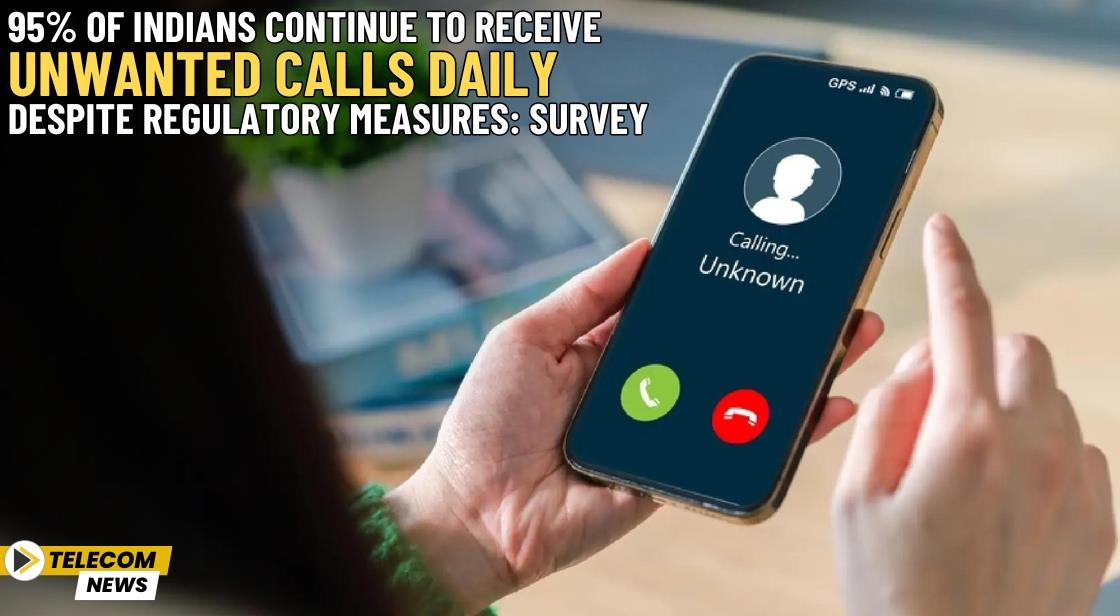95% of Indians Continue to Receive Unwanted Calls Daily Despite Regulatory Measures: Survey

News Synopsis
India's battle against unsolicited calls, commonly referred to as pesky calls, is intensifying despite ongoing efforts by regulatory bodies such as the Telecom Regulatory Authority of India (TRAI). A recent survey has unveiled alarming statistics, indicating that 95% of mobile users in India are bombarded with unwanted calls every day.
This represents a significant increase from the 90% reported just six months ago, underscoring the growing challenge of curbing this menace.
Survey Highlights the Escalating Issue of Pesky Calls in India
A comprehensive survey conducted by LocalCircles has shed light on the worsening situation:
-
Rising Frequency of Unwanted Calls: The survey reveals that a staggering 77% of respondents receive three or more unsolicited calls daily. Overall, 95% of mobile users report being plagued by these calls, highlighting that the problem is far from being contained.
-
Ineffectiveness of the DND List: The "Do Not Disturb" (DND) registry, which is supposed to shield consumers from unwanted calls, appears to be largely ineffective. An overwhelming 96% of individuals who have registered on the DND list continue to receive unsolicited calls, a concerning increase from the 90% reported six months earlier.
-
Sources of Unwanted Calls: The financial services and real estate sectors are identified as the primary culprits behind these nuisance calls. Approximately 88% of those surveyed attribute their unwanted calls to these industries, with calls from the financial sector alone surging from 54% to 66% in the past six months.
Regulatory Interventions Fall Short
Despite various measures by Telecom Regulatory Authority of India (TRAI) and the Central Consumer Protection Authority (CCPA) to tackle the issue, the effectiveness of these interventions remains questionable:
-
Higher Tariffs Proposal: In an attempt to curb the problem, TRAI has proposed introducing higher tariffs for calls and SMS beyond a certain daily limit. This strategy aims to make commercial communications via 10-digit numbers unviable for unregistered telemarketers. However, the implementation of this proposal has yet to yield significant results.
-
Stricter Scrutiny of Telemarketers: TRAI has recommended that telecom subscribers who make more than 50 calls or send over 50 SMS daily should be closely monitored as potential sources of nuisance calls. Telecom operators have been instructed to disconnect the services of businesses found misusing bulk connections for spam calls.
-
Blacklisting and Service Disconnection: TRAI has directed telecom operators to disconnect all services for entities identified as making spam calls. Additionally, the information is to be shared across networks to prevent the reactivation of services. Despite these directives, the issue continues to grow, raising questions about the overall efficacy of these measures.
Challenges in Tracking the Origin of Pesky Calls
One of the primary reasons for the surge in unwanted calls is the outsourcing of lead generation by companies to contractors who often use personal mobile numbers to make these calls. This practice poses significant challenges for regulators in tracking and controlling the origin of these calls.
Proposed Solutions to Tackle the Menace
Experts suggest that regulators could enforce stricter accountability measures on the companies benefiting from these leads. Additionally, there is a proposal for telecom operators to implement a system where users can flag unwanted callers. If a number receives an excessive number of complaints, it could be suspended or blacklisted. Moreover, linking the caller's identity to their Aadhaar information could prevent them from acquiring new SIM cards and resuming their activities.
Conclusion
The persistence of pesky calls in India, despite regulatory interventions, highlights the need for more robust and innovative solutions. While TRAI and CCPA have taken significant steps, the rising number of unwanted calls suggests that further action is required. Stricter enforcement, enhanced monitoring, and the implementation of advanced technologies to track and block these calls may be necessary to protect consumers from this growing nuisance.
You May Like









